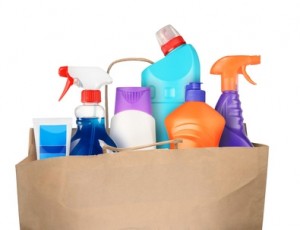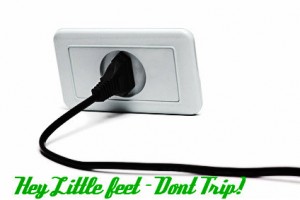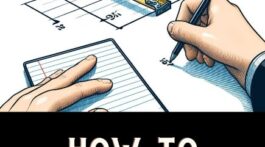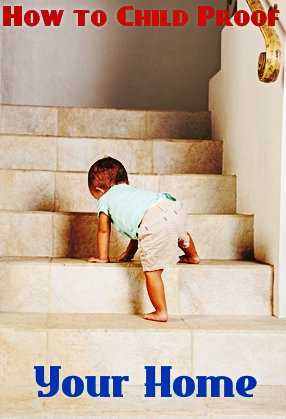Moving With Young Kids
When moving into a new place it’s easy to forget how different the world looks from the perspective of a baby, but this perspective is important to keep in mind as families prepare to introduce their latest family addition to their new home. In order to make your house child-friendly, you must first access your house and consider whether or not your house is safe in general.
Baby-proofing your home means you have taken into account the dangerous objects that might be easily accessible to your baby, and you have secured anything that they may try to open, pull, play with, or even put in their mouth that could possibly hurt them. Before bringing your new bundle of joy home, use these helpful tips to provide a better and safer environment for your home, to ensure that you’ve covered all of the basics of baby safety.
Recognize Hazards
As adults, we possess the ability to balance our curiosity with caution, keeping us safe in most cases. This differs for babies; however, it is important to remember that babies don’t see the world as adults do. As babies continue to grow, their curiosity grows within their surroundings. Curiosity is what compels them to explore.
As a parent, it is critical that your first step in baby-proofing your home is to see the world as our little one sees it. Recognize things that could be harmful and removing those objects so that there is no chance of your little one coming into contact with any harmful objects.
Chemicals
 Be mindful of where you store chemicals in your new home, such as cleaning supplies, detergents and etc. You should remember not to put chemicals in lower cabinets. If you have done so remove them from that area and place them in a new location outside of your baby’s reach.
Be mindful of where you store chemicals in your new home, such as cleaning supplies, detergents and etc. You should remember not to put chemicals in lower cabinets. If you have done so remove them from that area and place them in a new location outside of your baby’s reach.
Be sure that paint and other hazardous substances are stored in airtight containers on high shelves.
Simply moving chemicals to a storage room and locking the door is enough to prevent a crawling baby from harming themselves. As your child begins to get older and is able to walk on their own, you should take extra steps to certify that there is a safe barrier between your child and dangerous materials.
Small Objects
As a rule of thumb, anything that is small enough to be placed in a baby’s mouth should be moved and stored in a different location. Magnets, pens and small tools are considered “choking hazards” and should be placed out of your child’s reach.
Place these small objects in drawers high above your baby or inside cabinets. You should secure them with latches that prevent your child from accessing them. There are a large variety of latches and locks created for the purpose of making it difficult for your child to get near anything that could hurt them, also to limit the chance of injury.
Miscellaneous Hazards
 Think about the times that you, as an adult, have almost injured yourself after tripping over an electrical cord. These cords can be even more dangerous for a baby. A number of accidents could occur as a result of exposed electrical cords. Do as much as you possibly can to prevent this by gathering and tying electrical cords so that they cannot be reached by your baby.
Think about the times that you, as an adult, have almost injured yourself after tripping over an electrical cord. These cords can be even more dangerous for a baby. A number of accidents could occur as a result of exposed electrical cords. Do as much as you possibly can to prevent this by gathering and tying electrical cords so that they cannot be reached by your baby.
A set of stairs is something like a yellow brick road that an inquisitive little infant will feel the urge to follow. Rather than leading to an adventure, this could instead lead to disaster. Baby gates are a reliable go-to solution for this problem.
Go even further by installing two baby gates. Place one baby gate about three to four steps up. Then position the second gate near the top of the stairs. Due to the gate being positioned higher, it decreases your child’s chances of crawling over it, but in case you have a gifted climber on your hands, you will have a second gate which serves as another obstacle for them. If the baby happens to take a tumble, there is only a small amount of distance between the two gates.
Improve the Safety of Your Furniture
Falls and collisions with furniture are a couple of the most common threats to your baby’s safety. Secure furniture in place to decrease its potential of injuring your child.
·Add cushioned corner guards or edging to coffee and side tables, hearths, or any other sharp surfaces.
· Mount and secure bookshelves to walls so they don’t topple over.
· Place blockers in electrical sockets to protect your child from sticking their fingers in them.
When it comes to ensuring your child’s safety, there’s nothing that you wouldn’t do. Although you can’t prevent certain accidents from happening, minimizing their potential of occurring is crucial to the safety of your child. Before you bring your new baby home, make sure that your house is prepared for the amount of exploration that your infant will no doubt take part in.
 This article on how to baby proof your home comes to you from Julie Smith, a mother and a wife who enjoys DIY projects, blogging and simply spending time with her family. She is the writer of www.iheartthishouse.com , blogging is her new found interest and she hopes to educate and inform fellow readers of this post. Julie is a firm believer in family, friends, fun and an American Home Shield secure home.
This article on how to baby proof your home comes to you from Julie Smith, a mother and a wife who enjoys DIY projects, blogging and simply spending time with her family. She is the writer of www.iheartthishouse.com , blogging is her new found interest and she hopes to educate and inform fellow readers of this post. Julie is a firm believer in family, friends, fun and an American Home Shield secure home.









Great tips! You given some good ideas on child prevention. I will check out Julie’s blog – thanks for the link.
Very important topic, nice to see advice from a real estate agent on child proofing your home.